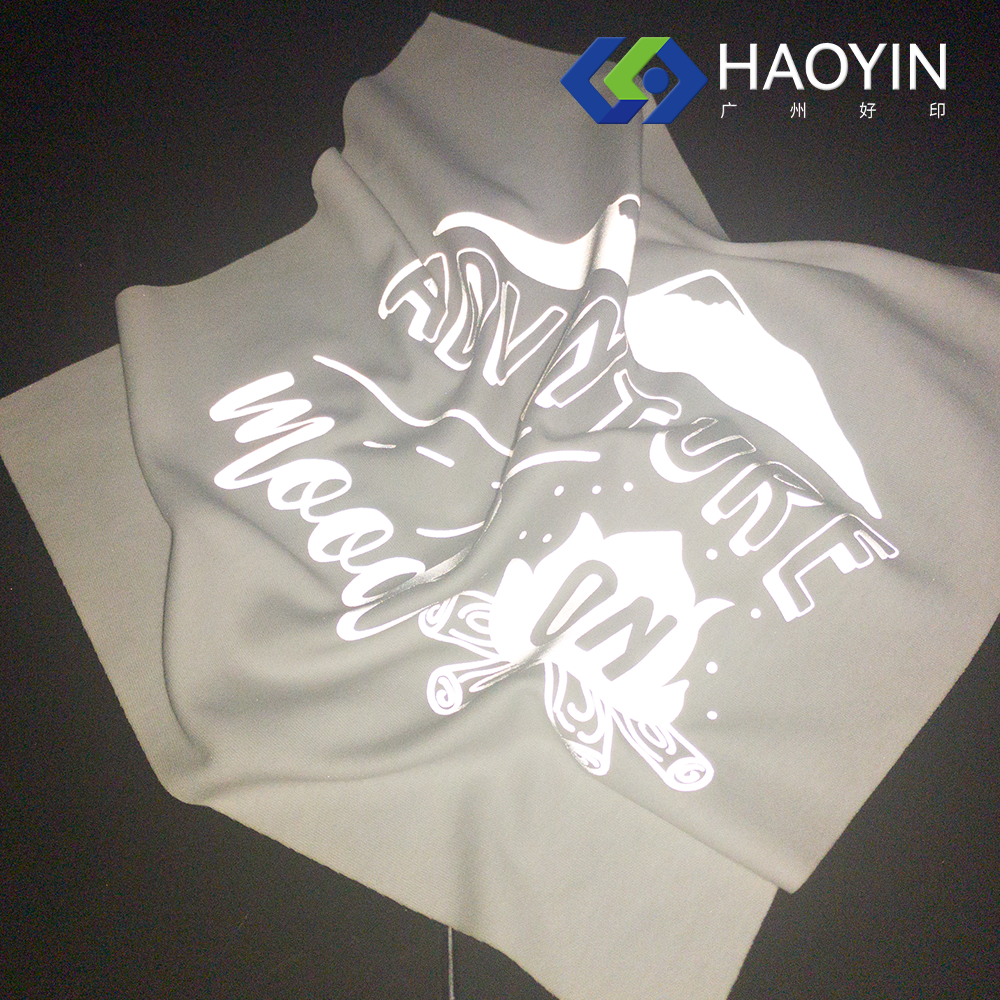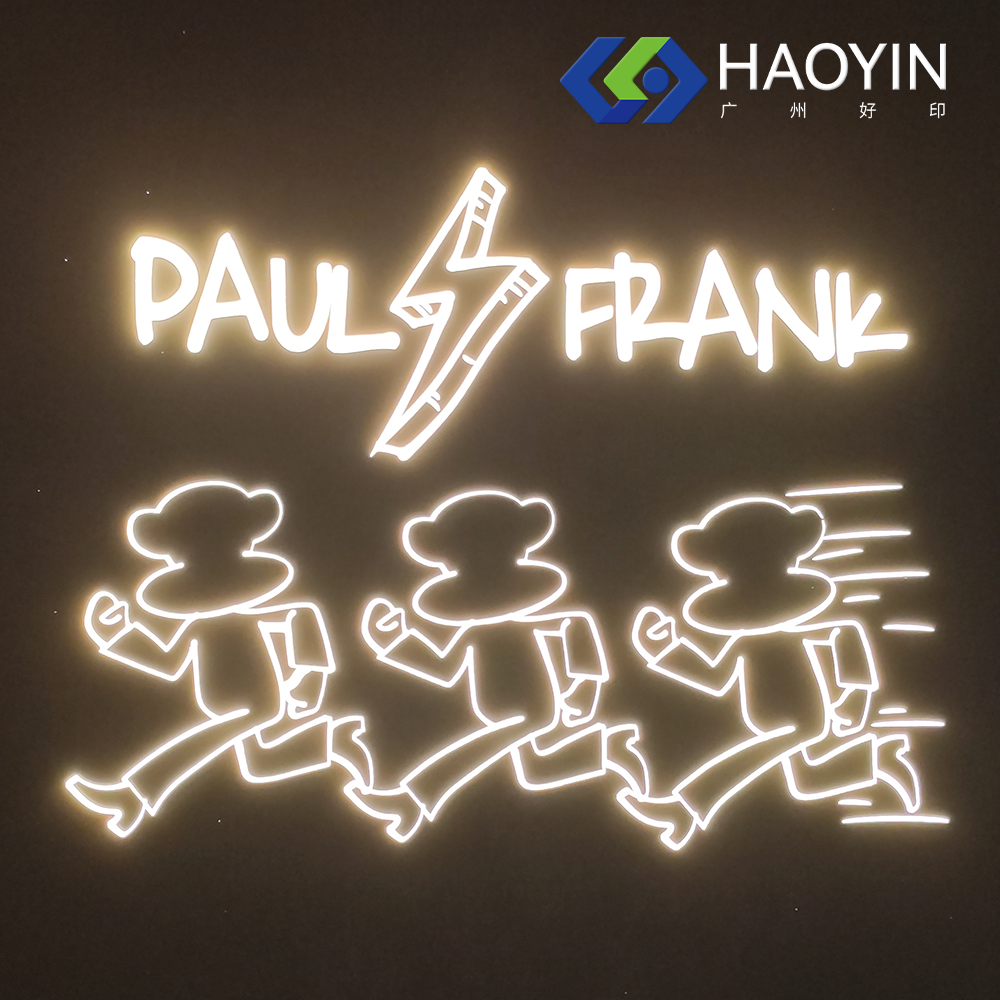Լույսը արտացոլող Ջերմաբանական փոխանցման Վինիլ
Պատվերով պատրաստվող և անվտանգության հագուստի արագ զարգացող աշխարհում ռեֆլեկտորային htv առաջացել է որպես հեղափոխական նյութ, որը համատեղում է գործառույթայնությունը և էսթետիկ դիզայնը: Այս նորարարական տաք տրանսֆերային վինիլային նյութը պարունակում է միկրոսկոպիկ ապակե գնդիկներ կամ պրիզմատիկ տարրեր, որոնք լույսը արտացոլում են դեպի աղբյուրը՝ ապահովելով բարձր տեսանելիություն թույլ լուսավորության պայմաններում: Արդյոք ձեր ձեռնարկության ղեկավար եք, ով ցանկանում է բարելավել ձեր ապրանքատանի աշխատանքային հագուստը, թե՞ ստեղծագործ հաճախորդ, ով ուսումնասիրում է նոր պատվերով պատրաստման հնարավորություններ, արտացոլվող HTV-ն առաջարկում է եզակի առավելություններ, որոնք այն տարբերում են սովորական վինիլային նյութերից:
Պատկերացնող ՀՏՎ-ի հետևում ընկած տեխնոլոգիան նյութերի գիտության տարիների ընթացքում կատարված մշակումների արդյունք է, որը հանգեցրել է այնպիսի արտադրանքի, որը ոչ միայն հարմարվում է տարբեր գործվածքներին, այլև պահպանում է իր պատկերացնող հատկությունները՝ բազմաթիվ լվացումների և կրելու ցիկլերի ընթացքում: Քանի որ անվտանգության կանոնները արդյունաբերության տարբեր ոլորտներում ավելի խիստ են դառնում, պատկերացնող ՀՏՎ-ի պահանջարկը շարունակում է աճել, ինչը այն դարձնում է ժամանակակից հագուստի հարմարեցման և անվտանգության հագուստի արտադրության անհրաժեշտ բաղադրիչ:
Տեխնիկական ասպեկտներ և կիրառման մեթոդներ
Մարմնի կառուցվածքը և հատկությունները
Հացա-reflection ՀՏՎ-ն բաղկացած է մի քանի շերտերից, որոնցից յուրաքանչյուրը ունի հստակ նշանակություն: Ստորին շերտը ապահովում է կայունություն և ջերմությամբ ակտիվացվող կպչուն հատկություններ, իսկ վերին շերտը պարունակում է պատկերացնող տարրեր: Այս տարրերը սովորաբար միկրոսկոպիկ ապակե գնդիկներ կամ պրիզմատիկ նյութեր են, որոնք լույսի ազդեցությամբ առաջացնում են բնորոշ արտացոլում: Նյութի հաստությունը սովորաբար տատանվում է 150-ից մինչև 500 միկրոն, ապահովելով ինչպես տևականություն, այնպես էլ ճկունություն:
Հակարդարձ տեսանելիություն ապահովող HTV-ի եզակի կառուցվածքը թույլ է տալիս պահպանել նրա արտացոլող հատկությունները՝ նույնիսկ բազմակի լվացումից և տարբեր շրջակա միջավայրի պայմանների ազդեցությունից հետո: Այս մաշվածակայունությունը հատկապես կարևոր է կիրառումների համար, որոնք պահանջում են երկարաժամկետ տեսանելիություն և բրենդի ճանաչում:
Կիրառման տեխնիկա և լավագույն մեթոդներ
Հակարդարձ տեսանելիություն ապահովող HTV-ի հաջող կիրառումը պահանջում է մանրամասներին ուշադրություն և ճիշտ տեխնիկա: Ընդհանուր առմամբ, գործընթացը սկսվում է դիզայնի ստեղծումով և նյութի կտրումով՝ օգտագործելով վինիլի կտրիչ կամ պլոթեր: Կիրառման ընթացքում ջերմաստիճանի վերահսկումը կարևոր է, քանի որ մեծամասնության համար անհրաժեշտ է 305°F-ից մինչև 320°F տիրույթում ջերմություն՝ օպտիմալ արդյունքներ ստանալու համար:
Մասնագիտական կիրառումը ներառում է ճշգրիտ ճնշման բաշխում և ժամանակացույց, սովորաբար 10-15 վայրկյան հզոր ճնշում, որին հաջորդում է սառը պոլիմերացման գործընթաց: Այս մեթոդաբանությունը ապահովում է նյութի հզոր կպչունություն՝ պահպանելով նրա արտացոլող հատկությունները: Բազմաշերտ դիզայնների դեպքում կարևոր է հաշվի առնել տարբեր նյութերի համատեղելիությունը և դրանց կիրառման հատուկ պահանջները:

Անվտանգության կիրառումներ և արդյունաբերական ստանդարտներ
Աշխատանքային միջավայրի անվտանգության բարելավում
Արդյունաբերական և շինարարական միջավայրերում արտացոլող HTV-ն աշխատողների անվտանգության համար կարևոր դեր է խաղում: Երբ կիրառվում է անվտանգության փողկապերի, աշխատանքային համազգեստների և պաշտպանական սարքավորումների վրա, այն զգալիորեն ավելացնում է տեսանելիությունը ցածր լուսավորվածության պայմաններում և վտանգավոր միջավայրերում: Շատ արդյունաբերություններ արտացոլող HTV-ն ընդունել են որպես անվտանգության ստանդարտ բաղադրիչ՝ համապատասխանելով կամ գերազանցելով OSHA և ANSI պահանջները բարձր տեսանելիության անվտանգության հագուստի համար:
Տարբեր անկյուններից լույսը արտացոլելու հատուկ հատկությունը նյութը դարձնում է հատկապես արդյունավետ դինամիկ աշխատանքային միջավայրերում, որտեղ սովորական արտացոլող ժապավենները կարող են չապահովել բավարար տեսանելիություն: Բարձրացված տեսանելիությունը ցույց է տվել, որ նվազեցնում է աշխատանքային վթարների քանակը և բարելավում է անվտանգության ընդհանուր պահանջների կատարումը:
Մարզական և հանգստի անվտանգություն
Մարզիկները և բնության մեջ ակտիվ հանգստանալու սիրահարները շատ շահում են իրենց սարքավորումներին արտացոլող HTV-ի կիրառումից: Արտացոլող HTV-ով վազքային հագուստը, հեծանվորդական մակազավակները և մարզական ակսեսուարները ապահովում են կարևոր տեսանելիություն առավոտյան վաղ կամ երեկոյան մարզանքների ընթացքում: Նյութի ճկունությունը թույլ է տալիս կատարել բարդ դիզայններ՝ չխոչընդոտելով շարժումներին կամ հարմարավետությանը՝ պահպանելով բարձր տեսանելիություն:
Շատ սպորտային բրենդեր իրենց արտադրանքների մեջ ներառել են ռեֆլեկտիվ HTV՝ ընդունելով դրա կրկնակի օգուտը անվտանգության բարձրացման և բրենդի տեսանելիության տեսանկյունից: Նյութի տևողականությունը համոզված է, որ ռեֆլեկտիվ հատկությունները պահպանվում են հագուստի կյանքի ընթացքում, նույնիսկ սովորական սպորտային օգտագործման և լվացման դեպքում:
Բրենդինգ և մարքեթինգի կիրառություններ
Կորպորատիվ ինքնության բարելավում
Ռեֆլեկտիվ HTV-ն առաջարկում է բրենդի տեսանելիության և ճանաչման եզակի հնարավորություններ: Ընկերությունները կարող են իրենց լոգոներն ու բրենդինգի տարրերը ներառել ռեֆլեկտիվ HTV-ի միջոցով՝ ստեղծելով հստակ ներկայություն, որը առանձնանում է, հատկապես թույլ լույսի պայմաններում: Այս երկակի նպատակային մոտեցումը միավորում է անվտանգության պահանջները մարքեթինգային նպատակների հետ՝ առավելագույնի հասցնելով բրենդավորված հագուստի և աքսեսուարների արժեքը:
Նյութի բազմակողմանիությունը թույլ է տալիս մանրամասն դիզայն և ճշգրիտ գունային համապատասխանեցում՝ ապահովելով ապրանքանիշի համապատասխանությունը տարբեր կիրառություններում: Շատ կազմակերպություններ պարզել են, որ արտացոլող HTV-ով ուժեղացված ապրանքանիշը ստեղծում է պրոֆեսիոնալ և անվտանգությանը գիտակցող կերպար՝ միաժամանակ մեծացնելով ապրանքանիշի ճանաչելիությունը թիրախային լսարանի շրջանում:
Միջոցառումների և գովազդային ապրանքներ
Միջոցառումների կազմակերպիչները և գովազդային ապրանքների արտադրողները հայտնաբերել են արտացոլող HTV-ի յուրահատուկ գրավչությունը՝ հիշարժան ապրանքներ ստեղծելու համար: Երաժշտական փառատոներից մինչև կորպորատիվ միջոցառումներ՝ արտացոլող HTV-ն ավելացնում է գովազդային ապրանքների արժեքը՝ միավորելով գործնական անվտանգության հատկանիշները գրավիչ դիզայնի տարրերի հետ:
Նյութի կարողությունը ստեղծել տեսողականորեն գրավիչ էֆեկտներ դարձել է հատկապես հայտնի գիշերային միջոցառումների և վայրէջքային գործողությունների համար, որտեղ տեսանելիությունը կարևոր է: Գովազդային ապրանքների նկատմամբ այս նորարարական մոտեցումը հանգեցրել է բարձր ընկալվող արժեքի և ավելացված հաճախորդների բավարարվածության:
Ապագայի միտումներ և նորարարություններ
Տեխնոլոգիական առաջընթացներ
Ռեֆլեկտորային HTV արդյունաբերությունը շարունակում է զարգանալ նոր տեխնոլոգիական նվաճումների շնորհիվ: Գիտնականները աշխատում են բարելավված ռեֆլեկտորային նյութերի վրա, որոնք առաջարկում են ավելի մեծ պստրիկություն և տևողականություն՝ պահպանելով ճկունությունը և կիրառման հեշտությունը: Աշխատանքներ են վարվում նաև ինտելեկտուալ ռեֆլեկտորային նյութերի վրա, որոնք կարող են փոխել գույնը կամ նախշը՝ կախված լույսի պայմաններից:
Ռեֆլեկտորային HTV-ի արտադրության մեջ կայուն արտադրական գործընթացներն ու էկոլորտ նյութերը ավելի ու ավելի մեծ նշանակություն են ձեռք բերում: Այս նորարարությունների նպատակն է նվազեցնել ազդեցությունը շրջակա միջավայրի վրա՝ պահպանելով կամ բարելավելով նյութի շահագործման հատկանիշները:
Ռազմավարական աճ և կիրառություններ
Ռեֆլեկտորային HTV-ի շուկան ընդլայնվում է՝ դուրս գալով ավանդական անվտանգության կիրառման սահմաններից և ներառյալ մոդան ու սպառողական ապրանքները: Դիզայներական բրենդերը ռեֆլեկտորային տարրեր են ներառում իրենց հավաքածուներում՝ ստեղծելով եզակի էստետիկական էֆեկտներ՝ պահպանելով գործնական անվտանգության առավելությունները: Կարծվում է, որ այս միտումը կշարունակվի, քանի որ սպառողների շրջանում անվտանգության և տեսանելիության հարցերի վերաբերյալ իրազեկվածությունը աճում է:
Նոր կիրառման մեթոդները և ավտոմատացված արտադրության տեխնիկաները հակադարձ տաք տեղափոխման ֆոլիան ավելի շատ հասանելի են դարձնում փոքր ձեռնարկությունների և անհատ ստեղծողների համար: Տեխնոլոգիայի այս դեմոկրատացումը տարբեր ոլորտներում նորարարական և ստեղծագործ կիրառությունների է հանգեցնում:
Հաճախ տրվող հարցեր
Որքա՞ն է հակադարձ տաք տեղափոխման ֆոլիայի կիրառության ժամկետը հագուստի վրա:
Ճիշտ կիրառման և խնամքի դեպքում հակադարձ տաք տեղափոխման ֆոլիան կարող է պահպանել իր արտացոլող հատկությունները 50-ից ավել անգամ լվացվելուց հետո: Իրական կյանքի տևողությունը կախված է լվացման ջերմաստիճանից, օգտագործման հաճախադեպությունից և շրջակա միջավայրի պայմանների ազդեցությունից: Խնամքի հանձնարարականներին հետևելը կարող է զգալիորեն երկարաձգել նյութի արդյունավետությունը:
Կարո՞ղ է արդյոք հակադարձ տաք տեղափոխման ֆոլիան կիրառվել բոլոր տեսակի գործվածքների վրա:
Հակադարձ տաք տեղափոխման ֆոլիան լավագույնս աշխատում է հաճախ հանդիպող գործվածքների վրա՝ ներառյալ բամբակե, պոլիեսթեր և բամբակ-պոլիեսթեր խառնուրդները: Այնուամենայնիվ, այն կարող է չհամապատասխանել բարձր էլաստիկությամբ նյութերին կամ ջրակայուն ծածկույթ ունեցող գործվածքներին: Խորհուրդ է տրվում փոքր տարածքի վրա փորձարկել մինչև լրիվ կիրառումը:
Ո՞ր սարքավորումներն են անհրաժեշտ ռեֆլեկտիվ HTV-ով աշխատելու համար:
Հիմնական պահանջներին են դասվում տաք սեղմակը կամ թուղթը, վինիլի կտրողը դիզայնի ստեղծման համար և մաքրման գործիքները: Ամենալավ արդյունքները ստացվում են բարձրորակ տաք սեղմակի միջոցով, որը ապահովում է ջերմաստիճանի և ճնշման հավասարաչափ կարգավորում: Կարող է անհրաժեշտ լինել նաև լրացուցիչ դիզայնի ծրագիր հատուկ կիրառությունների համար:



